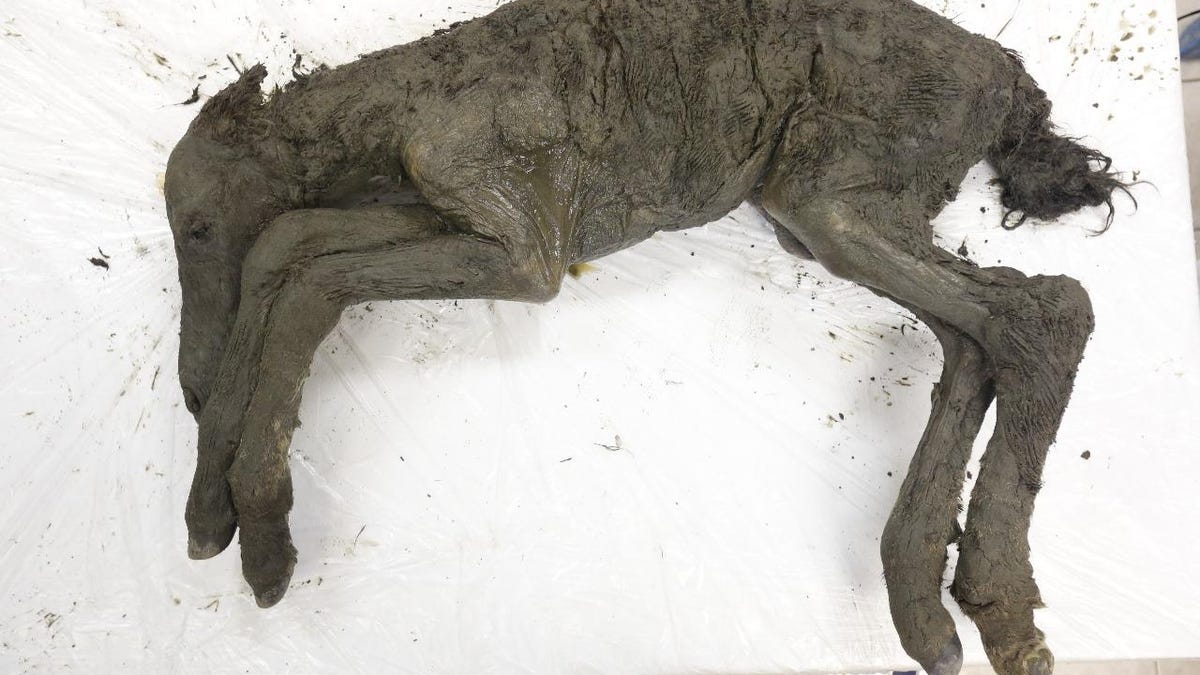Preserved paleolithic baby horse emerges from permafrost
Scientists unveil a 40,000-year-old foal found in Siberia's "Mouth of Hell."
A crater in Russia known as the "Mouth of Hell" has regurgitated a highly unusual find: a perfectly preserved baby horse whose kin roamed Siberia around 30,000 to 40,000 years ago. The state of the tiny horse is remarkable. You can even see the individual hairs on its body.
The Siberian Times first reported on the foal's discovery earlier this month and covered the detailed unveiling of the body this week. Semyon Grigoryev, head of the Mammoth Museum in Yakutsk, estimates the horse was just two months old when it died.
A close-up look at the foal's hooves shows the incredible state of preservation.
The horse belonged to an extinct group known as the Lena Horse (Equus lenensis). The Siberian permafrost is responsible for the foal's impressive state of preservation.
Researchers at Russia's North-Eastern Federal University, home of the Mammoth Museum, are now studying the horse. They have taken samples of the body and soil that surrounded it.
The team will perform a more complete dissection later to study its internal organs and the contents of its stomach. There are no obvious signs of trauma on the body.
"This is the first find in the world of a prehistoric horse of such a young age and with such an amazing level of preservation," Grigoryev told the Siberian Times.


